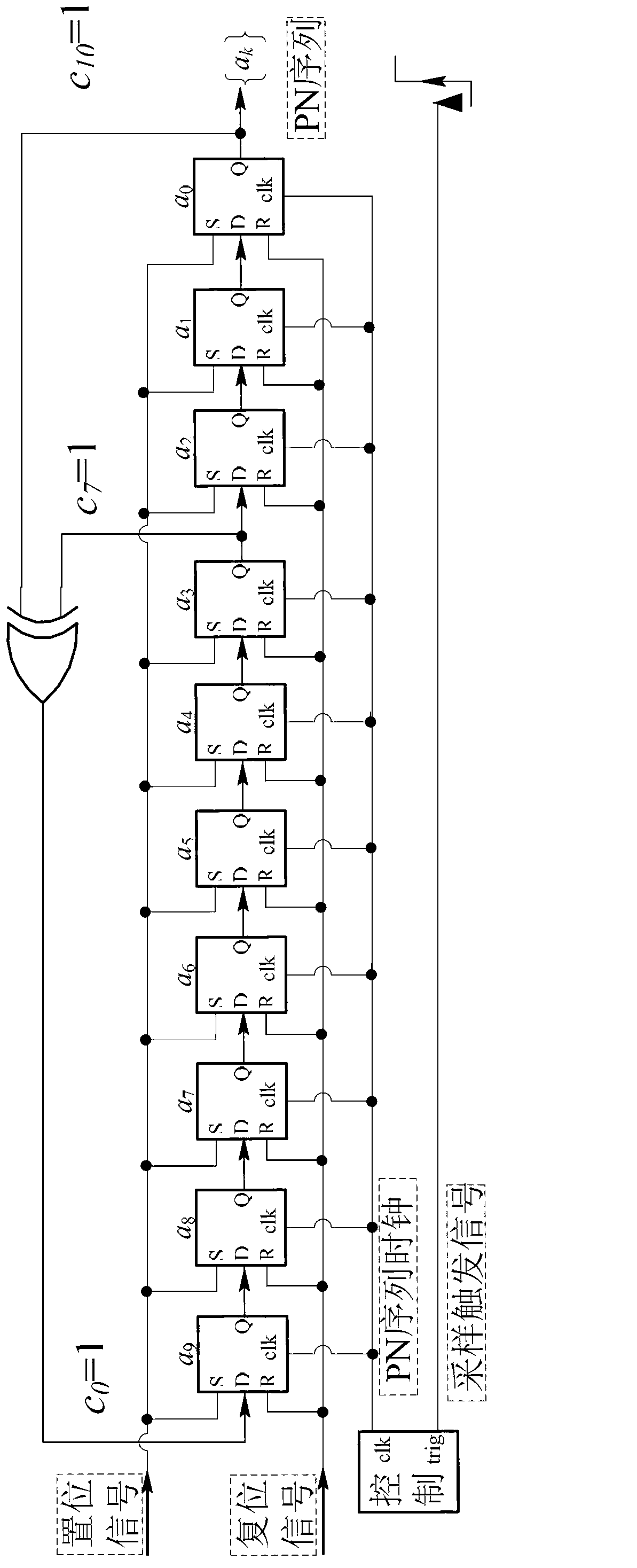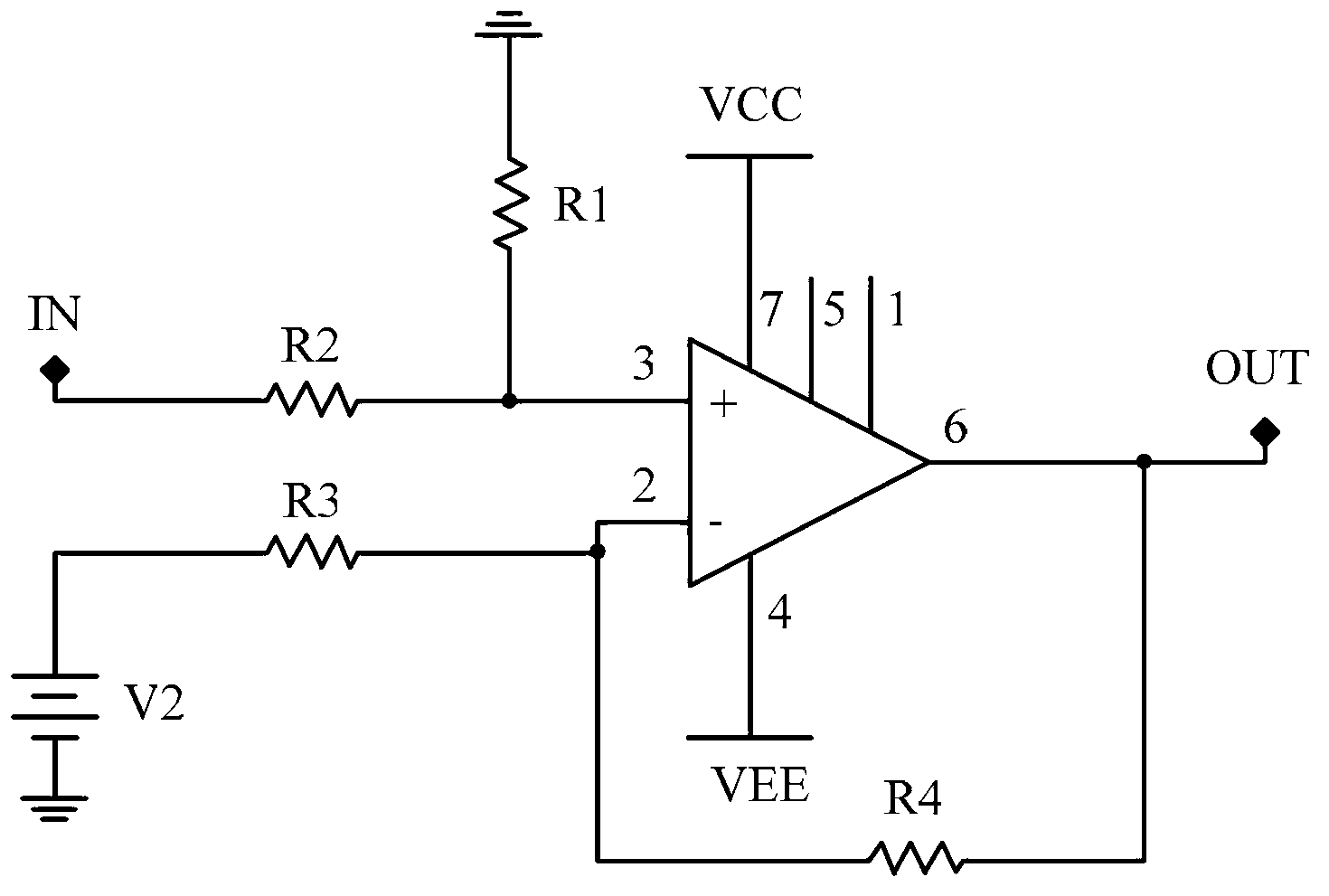Compressive-sensing-based sparse signal under-sampling method and implementation device
A sparse signal and compressed sensing technology, applied in the direction of analog-to-digital converters, can solve the problems of wasting sensor time and storage space, without reducing the pressure of front-end ADCs, etc., to facilitate transmission, reduce sampling rate, and reduce speed the effect of the requirements
- Summary
- Abstract
- Description
- Claims
- Application Information
AI Technical Summary
Problems solved by technology
Method used
Image
Examples
specific Embodiment approach 1
[0053] The specific embodiment one, the sparse signal undersampling method based on compressed sensing, it is realized by the following steps:
[0054] Step 1, using an m-sequence generator embedded in the FPGA to generate an m-sequence; and using the FPGA to generate a trigger signal synchronously;
[0055] Step 2, using the signal conditioning circuit to perform signal conditioning on the m-sequence generated in step 1, to obtain the conditioned m-sequence;
[0056] Step 3, mixing the conditioned m-sequence obtained in step 2 with the measured sparse signal using a multiplier to obtain a mixed frequency signal;
[0057] Step 4, using a low-pass filter to low-pass filter the mixed frequency signal obtained in step 3 to obtain a low-pass filtered signal;
[0058] Step 5, using the trigger signal generated in step 1 to trigger the sampling circuit, and using the sampling circuit to sample the low-pass filtered signal obtained in step 4 to obtain a sampling result;
[0059] St...
specific Embodiment approach 2
[0060] Specific embodiment two, the implementation device of sparse signal subsampling method based on compressed sensing, it comprises FPGA15, conditioning circuit 16, multiplier 11, low-pass filter 12, sampling circuit 13 and host computer 14;
[0061] Described FPGA15 is embedded with m sequence generator, and described m sequence generator is used for producing m sequence;
[0062] The m sequence output end of described FPGA15 is connected with the signal input end of signal conditioning circuit 16; The signal output end of described signal conditioning circuit 16 is connected with No. 1 signal input end of multiplier 11; No. two signal of described multiplier 11 The input end is used for receiving measured sparse signal; The signal output end of described multiplier 11 is connected with the signal input end of low-pass filter 12; The signal output end of described low-pass filter 12 is connected with the signal input end of sampling circuit 13 Connection; the signal outpu...
specific Embodiment approach 3
[0063] Specific Embodiment 3. The difference between this specific embodiment and the realization device of the compressive sensing-based sparse signal undersampling method described in specific embodiment 2 is that the model of FPGA 15 is EP2C8Q208.
PUM
 Login to View More
Login to View More Abstract
Description
Claims
Application Information
 Login to View More
Login to View More - R&D
- Intellectual Property
- Life Sciences
- Materials
- Tech Scout
- Unparalleled Data Quality
- Higher Quality Content
- 60% Fewer Hallucinations
Browse by: Latest US Patents, China's latest patents, Technical Efficacy Thesaurus, Application Domain, Technology Topic, Popular Technical Reports.
© 2025 PatSnap. All rights reserved.Legal|Privacy policy|Modern Slavery Act Transparency Statement|Sitemap|About US| Contact US: help@patsnap.com



